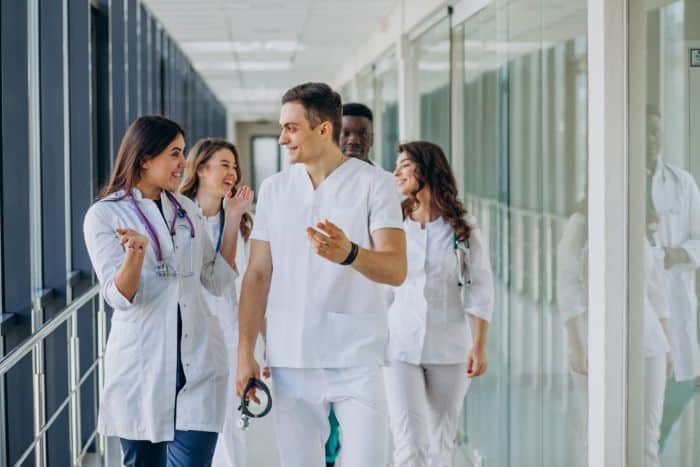The Efficient Solutions to Precertification Challenges
Dive into innovative solutions to precertification challenges, process, saving time, reducing errors, and enhancing patient care. Discover how to conquer the complexities and revolutionize your approach to healthcare administration.

Medical prior authorization is an essential step in healthcare, ensuring that certain treatments and medications receive insurance approval before proceeding. This process helps manage healthcare costs and ensures patient treatments are both necessary and covered under their insurance plans. Master your medical prior authorization process!
Click here for essential tips and guidance.
Table of Contents
Solutions to Precertification Challenges

In the dynamic world of healthcare, practitioners and institutions face numerous hurdles while seeking precertification for various services and procedures. This process, while vital for ensuring quality of care and cost management, often proves to be complex, time-consuming, and fraught with challenges. This blog post aims to unravel these complexities and offer practical, effective solutions to overcome the challenges tied to precertification. Whether you’re a healthcare provider, an insurance professional, or a patient navigating the healthcare landscape, understanding these solutions could expedite the precertification process and facilitate smoother healthcare experiences.
Understanding Precertification Challenges
Potential Delays in Patient Care
One of the primary challenges related to precertification is the potential for delays in patient care. The process of acquiring precertification can be time-consuming, often requiring extensive paperwork and communication between healthcare providers and insurance companies.
This can significantly delay the initiation of necessary medical procedures, resulting in prolonged discomfort for the patient and, in some instances, exacerbations of their medical conditions. Moreover, the bureaucratic hurdles and administrative red tape associated with the precertification process can often lead to confusion and miscommunication, further contributing to these delays.
Administrative Burden for Healthcare Providers
Another major challenge in the precertification process is the administrative burden it places on healthcare providers. In order to secure precertification, providers must often navigate a labyrinth of forms, policies, and procedures, which can vary significantly between different insurance companies. This administrative burden can lead to increased workload for healthcare staff, requiring them to spend valuable time on paperwork and correspondence with insurance companies, rather than focusing on direct patient care.
Such a time-intensive process can also lead to staff burnout, impacting the overall efficiency and productivity of healthcare institutions. In essence, the administrative complexities involved in obtaining precertification can strain resources, hamper patient care delivery, and potentially compromise the quality of care provided.
Possible Disagreements between Providers and Insurers
Another significant challenge that can arise during the precertification process is the potential for disagreements between healthcare providers and insurance companies. These disagreements often revolve around the necessity and appropriateness of certain medical services or procedures. Insurance companies, aiming to control healthcare costs, might deem certain treatments as unnecessary or overly costly and therefore refuse to grant precertification. Conversely, healthcare providers, advocating for their patients’ best interests, may strongly believe in the necessity of these treatments for ensuring optimal health outcomes.
These differing perspectives can result in protracted negotiations and disputes, further prolonging the precertification process. Additionally, these disagreements can strain relationships between healthcare providers and insurance companies, leading to a breakdown in communication and collaboration that can adversely affect patient care. It’s crucial, therefore, for both parties to seek common ground and work towards shared objectives, such as improving patient outcomes while managing healthcare costs.
Impact of Precertification Challenges
For Healthcare Providers

Precertification challenges can significantly hamper the smooth functioning of healthcare providers. The time and effort invested in navigating the complex bureaucracy often detracts from their primary role—administering care to their patients. This diversion of resources can result in decreased productivity and efficiency, and in severe cases, cause staff burnout.
Moreover, the potential disagreements with insurance companies can strain professional relationships, leading to a detrimental working environment.
For Insurance Professionals
For insurance professionals, the precertification process can be equally taxing. Contention with healthcare providers over the necessity of procedures can be time-consuming and may result in negative publicity. Moreover, the administrative workload can impact the efficient processing of other insurance claims, affecting overall company productivity and potentially leading to dissatisfaction among policyholders.
For Patients
Patients bear the brunt of these precertification challenges. Delays in the initiation of necessary medical procedures can exacerbate their health conditions and cause undue stress. Furthermore, the potential for denied coverage due to disagreements between providers and insurers can result in financial burden, as patients might be forced to pay out-of-pocket for necessary treatments. Ultimately, these challenges can significantly impact patients’ healthcare experiences, potentially affecting their trust in the healthcare system and their overall health outcomes.
I'm very thankful for Portiva who I know is looking after my practice while I'm gone the virtual assistants can manage prescription refills, documents they can triage patients and just kind of answer administrative questions and they can handle a lot on their own. But also, they're very good about contacting me if there's any emergency or anything I need to attend to. So I'm very thankful for Portiva they can help almost any provider almost anywhere and it really allows for some good work-life balance as I'm getting to experience right now at my family farm so I'm very thankful for Portiva and I'm very happy to use their services"

Board Certified Family Medicine Physician

Portiva's Virtual Medical Assistant - I have all the support I need. There's somebody checking my email, any patient messages. Patients are still able to schedule and handle any scheduling issues and any kind of billing that needs to still go through. Portiva hands handles it all for me. I have support i have somebody that I can access 24/7 pretty much. It's all very seamless. If somebody has an emergency or needs a medication called in. I know that the va's at portiva will handle that for me.

Board Certified Family Medicine Physician

Overcoming Precertification Challenges
 Technological solutions
Technological solutions
Automated systems can play a pivotal role in addressing the challenges associated with precertification. These systems can streamline and expedite the precertification process, reducing administrative burdens, and minimizing potential for disputes.
Automated precertification systems can allow healthcare providers to submit and track precertification requests digitally, reducing the need for time-consuming paperwork and manual follow-ups. These systems can also provide real-time updates on the status of precertification requests, enabling greater transparency for all parties involved.
Moreover, the use of standardized criteria for precertification decisions in these automated systems can reduce potential disagreements between healthcare providers and insurance companies. By basing precertification decisions on established clinical guidelines, these systems can ensure that the necessary treatments are approved promptly, improving the efficiency of care delivery.
Besides, automated systems can also help in reducing errors associated with manual data entry, thereby further enhancing the efficiency and accuracy of the precertification process. Thus, the adoption of automated systems for handling precertification requests can significantly mitigate the complexities and challenges associated with precertification, facilitating smoother and more efficient healthcare experiences for all stakeholders.
Policy solutions
Streamlining policies can significantly reduce the challenges associated with the precertification process. Clear, concise, and universally accepted policies can minimize potential disagreements between healthcare providers and insurance companies, eliminating unnecessary delays and enhancing the overall precertification process. Policies should be designed to standardize both the criteria and the process for obtaining precertification across different insurance companies, thus reducing the administrative burden for healthcare providers.
For instance, insurance companies could adopt a unified set of guidelines for precertification. This common framework would ensure that all parties adhere to the same set of criteria, thereby reducing ambiguities and potential disputes over treatment necessity and costs. Similarly, implementing policies that limit the number of unnecessary or redundant precertification requirements can further streamline the process.
Additionally, better communication policies can also be beneficial. Regular interactions and dialogue between healthcare providers and insurance companies can foster better understanding and cooperation, facilitating easier resolution of any disputes that may arise. This, in turn, can speed up the precertification process and enhance patient care.
Lastly, policies that encourage transparency in the precertification process can foster trust and collaboration between healthcare providers and insurance companies. Full disclosure of precertification criteria, timelines, and decision-making processes can help all parties understand each other’s perspectives better, thus fostering a more cooperative and efficient working environment. In essence, streamlining policies can reduce the precertification hassles, thus enhancing the efficiency of healthcare delivery and improving the patient experience.
Communication solutions
Enhanced communication between healthcare providers, insurance professionals, and patients is a critical strategy to alleviate precertification challenges. Effective communication can lead to better understanding and collaboration among all stakeholders, thereby improving the precertification process.
For healthcare providers and insurance professionals, clear communication on precertification requirements, procedures, and decisions can help prevent misunderstandings and disputes. Regular dialogues, through meetings, teleconferences, or digital platforms, could serve as a medium to clarify doubts, discuss contentious issues, and foster a cooperative working relationship.
For patients, comprehensive and understandable information can help them navigate the precertification process with ease. Healthcare providers and insurance companies should strive for simple, jargon-free communication that empowers patients to understand their coverage, the rationale behind precertification decisions, and any financial implications involved.
Moreover, open channels of communication can help gather feedback from all stakeholders, providing valuable insights to improve the precertification process and address their concerns.
In essence, effective communication forms the backbone of a streamlined precertification process, fostering mutual understanding, reducing tensions, and ultimately, enhancing the healthcare experience for everyone involved.
Outsourcing solutions

Outsourcing precertification tasks to specialized firms can provide a viable solution to the complexities and administrative burdens associated with the precertification process. Through their expertise in handling precertification processes, these firms can help healthcare providers navigate the complexities of insurance requirements with greater efficiency and accuracy.
Outsourcing solutions offer several advantages. First, it allows healthcare providers to focus more on patient care rather than administrative tasks. Second, specialist firms are well-versed in the precertification requirements of various insurance companies, reducing potential errors and disputes. Third, these firms often have dedicated teams to monitor and track precertification requests, ensuring timely follow-ups and approvals.
Moreover, the use of advanced technology by these specialist firms can enhance the efficiency of the precertification process. For instance, they may employ automated systems for tracking and updating the status of precertification requests, reducing manual work and the associated risks of errors.
In essence, outsourcing can be a practical pathway to addressing the challenges of the precertification process, offering a blend of expertise, efficiency, and focus on patient care.
Conclusion
In conclusion, addressing the challenges of the precertification process requires comprehensive, well-rounded solutions. Streamlining policies, enhancing communication, and outsourcing the process to specialized firms are effective strategies to simplify the precertification process. Streamlined policies ensure consistency and clarity, reducing the administrative burden on healthcare providers. Improved communication between all stakeholders – healthcare providers, insurance companies and patients – fosters mutual understanding and reduces disputes, enhancing the efficiency of the process. Outsourcing to specialized firms allows healthcare providers to focus on patient care, while experts handle the complexities of precertification. With these combined efforts, we can create an environment where the precertification process is no longer a hassle, but a seamless part of a more efficient and patient-centered healthcare experience.
To learn more about drug formulary that can enhance your medical practice. Discover more about Portiva and unlock a world of possibilities by visiting our homepage today!
- Prior authorization services
- Prior authorization cost-benefit
- Prior authorization and patient care
- Prior authorization workflow efficiency
- Prior authorization in patient access services
- The impact of precertification services
- Reducing preauthorization costs
- Prior authorization challenges
- Obtaining prior authorization with ease
- Eliminate precertification denials
- Prior authorization guide
- Importance of prior authorization training
- Optimized prior authorization strategies
- Prior authorization support
- Why prior authorization training is crucial in healthcare
- The advantages of prior authorization support
- Maximizing prior authorization
- Prior authorization policy changes
- How outsourcing preauthorization works

